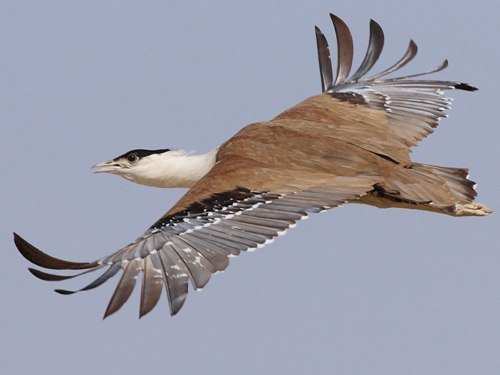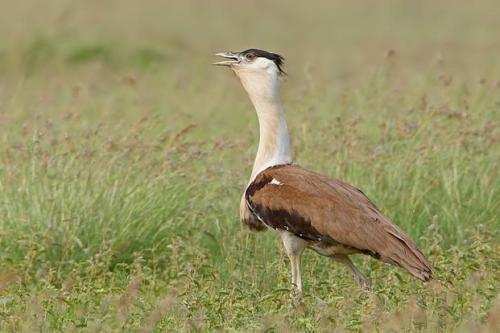Natures Airplane – The Great Indian Bustard
on my trip to Myajalar, a village close to the Pakistan border in Rajasthan, I remember seeing one bird, which to a child’s mind was just another kind of Ostrich. This bird known as the Great Indian Bustard is almost a relative to Ostrich in looks and colour. Long neck, big horizontally spread body and long legs just like those of an ostrich, this bird is almost extinct now. This heavy bird flies,too, and is the heaviest among flying birds. The neck is white, body is close to shade of sandalwood and grey combination...a little darker also...the bustard is almost 1 metre tall. Females are a little shorter than 1 metre

India has lots of beautiful birds. Big, small, colourful, not so colourful, even dull shaded birds but they are all beautiful. Peacocks and parrots are the ones which dance in front of everybody’s eyes at the mention of birds.
As a kid on my trip to Myajalar, a village close to the Pakistan border in Rajasthan, I remember seeing one bird, which to a child’s mind was just another kind of Ostrich. This bird known as the Great Indian Bustard is almost a relative to Ostrich in looks and colour. Long neck, big horizontally spread body and long legs just like those of an ostrich, this bird is almost extinct now. This heavy bird flies,too, and is the heaviest among flying birds. The neck is white, body is close to shade of sandalwood and grey combination…a little darker also…the bustard is almost 1 metre tall. Females are a little shorter than 1 metre.

It is an endangered species. The meat of this bird was in great demand which resulted in the species going extinct. Hunting is prohibited now. The bustard is mostly found in dry regions. It is said that it avoids irrigated areas and lives mostly among thorny bushes. The breeding area includes India and Pakistan. Bustards feed mostly on insects and also beetles which are found mostly in arid zones. Lizards are also a part of the diet. If in cultivated areas, these bustards feed mostly on bajra(millet) and also groundnuts.
In 2011 this species was declared as critically endangered by the Birdlife International. The downfall in the number of the Great Indian Bustard has been mainly due to rampant hunting and poaching. Studies have revealed that the expansion of renewable energy infrastructure is also a reason for threat on the life of this bird.
Apart from Rajasthan, this endangered species was earlier found in large numbers in Madhya Pradesh, Haryana, Uttar Pradesh, Andhra Pradesh, Gujarat, Karnataka and Punjab.
To join us on Facebook Click Here and Subscribe to UdaipurTimes Broadcast channels on GoogleNews | Telegram | Signal


